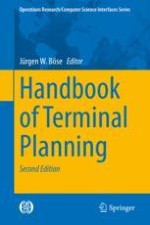2020 | OriginalPaper | Chapter
15. Raising Efficiency of Straddle Carrier Operations by Twin Container Handling
Authors : René Eisenberg, Thomas Koch, Marcel Petersen, Frank Wagner
Published in: Handbook of Terminal Planning
Publisher: Springer International Publishing
Activate our intelligent search to find suitable subject content or patents.
Select sections of text to find matching patents with Artificial Intelligence. powered by
Select sections of text to find additional relevant content using AI-assisted search. powered by
